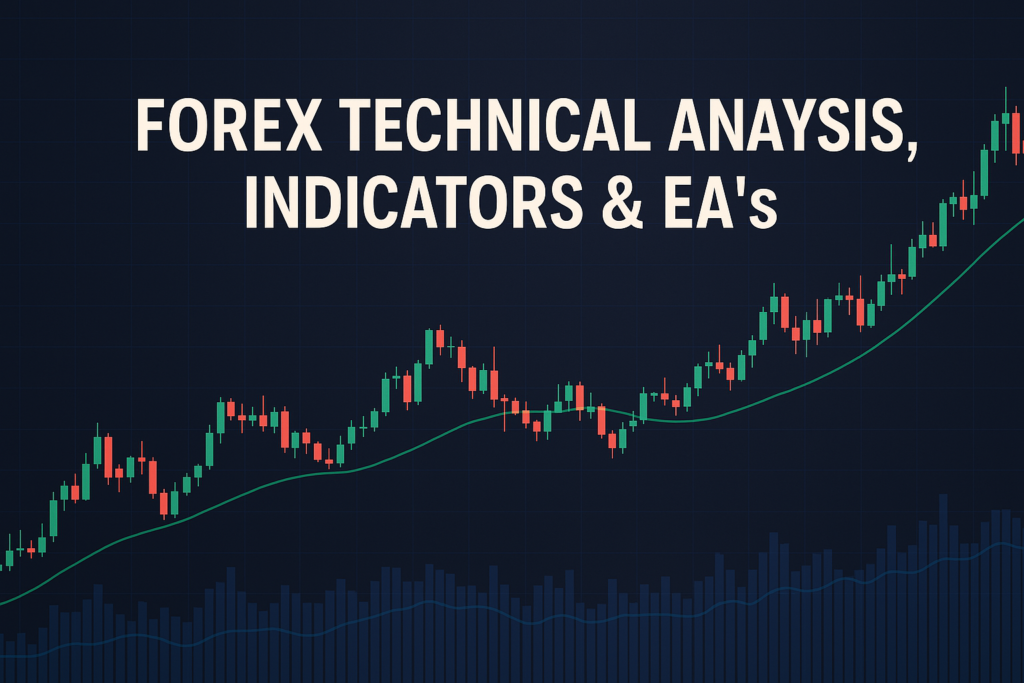
The 15 day moving average is a key indicator in Forex trading, helping traders identify trends and make informed decisions.
The 15 day moving average is a powerful tool in Forex trading. It helps traders find trends in currency prices over a specific period. By averaging the closing prices over the last 15 days, it smooths out price fluctuations. This makes it easier for traders to spot potential buy or sell signals.
However, many traders, both beginners and professionals, often struggle with understanding how to use the 15 day moving average effectively. They may find it confusing, especially when trying to interpret the signals it generates. This confusion can lead to missed opportunities or incorrect trades.
Understanding the 15 day moving average is important for success in Forex trading. By learning how to apply it correctly, traders can make informed decisions. This article will explore the concept of the 15 day moving average, its history, advantages, disadvantages, and various trading strategies.
Sometimes, traders face issues like platform crashes. These unexpected problems can disrupt trading activities and lead to missed opportunities. If you’re curious about how to manage these situations, check out our article on platform crashes.
What is a 15 Day Moving Average?
What is a 15 Day Moving Average?
The 15 day moving average is a tool that averages the closing prices of a currency pair over the last 15 days. Imagine you have a diary. Each day, you write down the price of a currency. After 15 days, you add up all those prices and divide by 15. This gives you the average price for that period. This average helps smooth out the ups and downs in price, making it easier to see the overall trend.
Types of 15 Day Moving Average
There are several types of moving averages, including:
- Simple Moving Average (SMA): This is the basic form, where you take the average of the last 15 closing prices.
- Exponential Moving Average (EMA): This gives more weight to recent prices, making it more responsive to new information.
- Weighted Moving Average (WMA): Similar to EMA, but it assigns different weights to prices based on their age.
How 15 Day Moving Average Smooths Out Price Action
The 15 day moving average helps traders see the general direction of a currency pair. When prices are volatile, it can be hard to tell where they are headed. The 15 day moving average smooths out these fluctuations. For example, if the price has ups and downs every day, the moving average will provide a clearer picture of whether the currency is generally going up or down.
Common Periods Used and Why
While the 15 day moving average is popular, traders often use different periods for analysis. Common periods include:
- 5-day: Good for short-term trades.
- 20-day: A more balanced approach for medium-term trading.
- 50-day: Helps identify long-term trends.
Each period has its purpose, and traders choose based on their trading style and the market conditions.
The History of 15 Day Moving Average: How It Became Popular
Origin of 15 Day Moving Average
The concept of moving averages dates back to the early days of trading. It was developed to help traders make sense of price fluctuations. The 15 day moving average became popular because it strikes a balance between short-term and long-term trends. Traders appreciated its simplicity and effectiveness.
When Did Traders Start Using It Widely?
Real-Life Stories
Many professional traders credit the 15 day moving average as a key factor in their success. For example, one trader used it to identify a bullish trend in the Euro. By entering a trade based on this indicator, he made a significant profit. His story shows how understanding the 15 day moving average can lead to fortunes in Forex trading.
Advantages and Disadvantages of 15 Day Moving Average
Advantages:
- Helps Identify Trends Easily: The 15 day moving average clarifies the direction of price movements.
- Useful for Dynamic Support and Resistance: It can act as a support level during uptrends and a resistance level during downtrends.
- Works Well for Crossover Strategies: Traders can use it alongside other moving averages to confirm buy or sell signals.
Disadvantages:
- lags behind price movements: The 15 day moving average reacts slowly to sudden price changes.
- Can Give False Signals in Sideways Markets: When the market is not trending, it may provide misleading signals.
How to Apply 15 Day Moving Average on MT4 & MT5
Step-by-Step Guide to Adding 15 Day Moving Average on Charts
To add a 15 day moving average on your MT4 or MT5 platform, follow these steps:
- Open your trading platform.
- Select the currency pair you wish to analyze.
- Click on “Insert” in the top menu.
- Choose “Indicators,” then “Trend,” and select “Moving Average.”
- Set the period to 15 and choose your preferred color and style.
Customizing 15 Day Moving Average Settings
You can customize your 15 day moving average in various ways. Change the color to make it stand out on your chart. Adjust the line type (solid, dashed, etc.) to match your preferences. This helps you read the charts more easily.
Saving Templates for Easy Application
Once you have your 15 day moving average set up, save it as a template. This way, you can quickly apply it to other charts without starting from scratch. Just click on “Template” and then “Save Template.” Name it something memorable for easy access.
5 to 7 Trading Strategies Using Only 15 Day Moving Average
All Time Frame Strategy (M5 to D1)
This strategy works on all time frames. Traders look for price to cross above or below the 15 day moving average. If price crosses above, it’s a buy signal. If it crosses below, it’s a sell signal. For example, if the EUR/USD crosses above the 15 day moving average, enter a buy trade.
Trending Strategies
In a strong trend, the price will often stay above the 15 day moving average for an uptrend or below for a downtrend. Buy when the price is above and pullbacks occur to the moving average. Sell when the price is below and rallies occur to the moving average.
Counter Trade Strategies
In a counter-trend strategy, traders look for price to bounce off the 15 day moving average. If the price is in a downtrend and touches the moving average, it may be a good time to buy. Conversely, if in an uptrend, a touch may signal a good time to sell.
Swing Trades Strategies
Swing traders can use the 15 day moving average to find entry points. They look for price to pull back to the moving average during an uptrend and enter a buy position. In a downtrend, they wait for a bounce to enter a sell position.
5 to 7 Trading Strategies Combining 15 Day Moving Average with Other Indicators
All Time Frame Strategy (M5 to D1)
This strategy combines the 15 day moving average with the RSI (Relative Strength Index). When the RSI is below 30 and the price crosses above the 15 day moving average, it’s a buy signal. When the RSI is above 70 and the price crosses below, it’s a sell signal.
Trending Strategies
Combine the 15 day moving average with the MACD (Moving Average Convergence Divergence). A buy signal occurs when the MACD line crosses above the signal line while the price is above the 15 day moving average. A sell signal happens when the MACD line crosses below while the price is below the moving average.
Counter Trade Strategies
In counter trade strategies, traders can use the 15 day moving average with Bollinger Bands. If the price hits the lower band and is above the 15 day moving average, it’s a buy signal. If it hits the upper band while below the moving average, it’s a sell signal.
Swing Trades Strategies
For swing trades, combine the 15 day moving average with Stochastic Oscillator. When the Stochastic shows oversold conditions (below 20) and the price touches the moving average, consider a buy. For a sell signal, look for overbought conditions (above 80) while the price is below the moving average.
Sometimes, traders face issues like Pre-set lot sizes not being remembered. Be sure to check out our article for solutions.
Top 10 FAQs About 15 Day Moving Average
1. What is the 15 day moving average?
The 15 day moving average is an average of the closing prices of a currency pair over the last 15 days, helping traders identify trends.
2. How is it calculated?
Add the closing prices of the last 15 days and divide by 15 to get the average price.
3. Why is it important?
It helps traders smooth out price action, making it easier to identify trends and potential buy/sell signals.
4. Can it be combined with other indicators?
Yes, it can be effectively combined with other indicators like RSI, MACD, and Bollinger Bands for better trading strategies.
5. What are the disadvantages?
It lags behind price movements and can give false signals in sideways markets.
6. How do I use it in trading?
Use it to identify trends, determine support/resistance levels, and as part of crossover strategies.
7. What time frames work best?
It works well across various time frames, from M5 to D1, depending on your trading style.
8. Is it suitable for beginners?
Yes, it’s simple to understand, making it a good starting point for beginner traders.
9. How can I customize it on MT4/MT5?
You can change its color, line type, and save it as a template for easy access on different charts.
10. Should I rely solely on it for trading decisions?
While it’s useful, it’s best to combine it with other tools and analysis for more accurate trading decisions.
Conclusion
The 15 day moving average is a valuable tool for Forex traders. It helps in identifying trends and making informed decisions. By understanding its advantages and disadvantages, traders can use it more effectively.
Always remember to test your strategies with a demo account before risking real money. With practice, you can master the 15 day moving average and improve your trading skills.
In the ever-changing world of Forex trading, the 15 day moving average can be your guiding light. Embrace it, and you may find success on your trading journey!
This post complements what we’ve discussed here—check it out for more insights Saxo Bank, IG Group
Expand Your Knowledge
- 📌 Forex Trading Learning Road Map
- 📌 Forex Trading Course with no Fees
- 📌 Forex Trading Issues, Problems, and Solutions
- 📌 Forex Daily Forecast & Live Updates
- 📌 Forex Fundamental & News Analysis: Tomorrow’s Market Movers & Trade Opportunities
- 📌 Forex Education Hub: Learn & Profit
- 📌 Forex Technical Analysis, Indicators & EA’s
Start Trading Today
Ready to take your forex trading to the next level? Open an account with Exness, one of the most trusted platforms in the industry. 👉 Sign Up Now and trade with confidence!
My recommended broker stands out with ultra-low spreads for beginners, instant withdrawals, and zero spread accounts for pro traders.
Trusted since 2008, lightning-fast execution, no hidden fees, and a secure, transparent trading environment—giving you the edge you need to succeed. 🚀
YouTube Video Library: Related Videos
Note: The video above is embedded from YouTube and is the property of its original creator. We do not own or take responsibility for the content or opinions expressed in the video.



